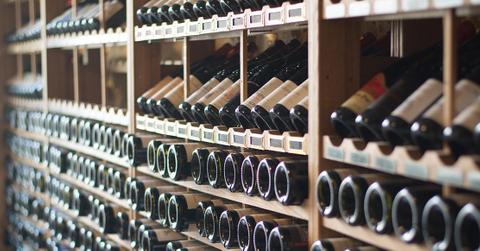
Pure Pours: Understanding A Single Grape
Sauvignon Blanc is by no means shy; it can flaunt zesty aromas of lemon citrus and fresh cut grass along with its stone or tropical fruit flavors. Riesling adds a faint bouquet of fresh blossoms to its citrus character, and may take on a unique whiff of petrol that adds intriguing complexity to the final wine. If a glass of heady apricot-nectarine perfume sounds like heaven instead, you’ll want to grab a glass of Viognier. Grape varieties each have inherent, unique aroma and flavor compounds, which can then be found in their wines. If you are always throwing back a glass of Australia’s Chardonnay-Viognier blend, you may never discover the pure hedonistic qualities of Viognier itself.
Just when you start to get the hang of individual grape characteristics, the wine industry throws another layer of complexity into its prized product.
In fact, it’s written into local wine law for numerous European wine regions. It’s solely the Nebbiolo grape all the time, every time, in the small town of Barolo. Taste a Barolo wine and you can expect deep red fruits, a hint of dried rose petal, and herbs. That is the very point: for the consumer to be able to expect a certain taste profile when they pull that Barolo off the retail shelf or from the restaurant wine list.The Piemonte region, Barolo’s home, has a thing for 100% wines. Its famous white, Gavi, must be made from 100% Cortese to show off that grape’s citrus, green apple and pear fruit; and its sparkling Asti wine must be 100% Moscato, with its pronounced grapey character. But the fun does not stop there; this can be found all across the country as you travel from region to region.
Much of this dedication to certain grape varieties springs from the country’s rugged terrain (the Alps run across the northern border and the Apennine Mountains run along the entire spine, north to south) as well as long periods of political discord—all making grape sharing between regions a rare thing indeed.France has its own varietal wines. The Loire Valley’s Vouvray must be 100% Chenin Blanc. Taste it and you’ll know the grape’s green apple-citrus rind-apricot goodness. The Northern Rhone’s Cornas region shows off the sexy richness of black fruits from 100% syrah… and… we are just getting started. We could spend days listing 100% varietal wines. Just when you start to get the hang of individual grape characteristics, the wine industry throws another layer of complexity into its prized product. The place where a particular grape variety is grown plays an integral part in the wine’s final taste.
The topography, soil, aspect, and so much more of each vineyard site affect the wine grape’s aromas, flavors and character.
A sauvignon blanc from France’s cool Loire Valley tends to show more reserved citrus and stone fruits with a great mineral character, while a New Zealand sauvignon blanc is known for its pungent, pronounced grassiness and tropical fruit flavors.Red wines are no different. While Cabernet Sauvignon’s strong personality ensures that no matter where it is planted around the world, you’ll feel at home with its blackberry fruits, it will still taste differently whether its from Bordeaux or Napa Valley. Bordeaux’s maritime climate doesn’t ripen fruit the same as Napa’s Mediterranean climate does. In their youth, Bordeaux reds can be tannic and tightly structured. But with patience, a Bordeaux will open its peacock feathers, revealing intriguing layers of fruit, spice, leather and forest floor.
Many Napa Valley Cabs are richer and riper upon release, making them easy-pleasers early on. But wait! There’s more: Like a succession of boxes where the smallest reveals the most special prize, a certain vineyard site within a region will create unique characteristics in the wine as well. A vineyard on a south-facing hill in Burgundy will get more direct and intense sunshine than a f latter site on the plains. That sun-blessed site will better ripen the grapes and build f lavors. Each grape variety goes through a succession of flavors as it ripens.
The topography, soil, aspect, and so much more of each vineyard site affect the wine grape’s aromas, flavors and character. Vineyard specific—or “vineyard designated” wines as they are often called—became the darling of places in the New World as well. Napa Valley saw a rise in popularity of single vineyard wines a couple of decades ago, with vineyard names such as To Kalon, Georges III, and Martha’s Vineyard appearing on the labels. Tasting one of these vineyard-specific wines gives you a front row seat to the dappled sunshine and gentle afternoon breezes which the grapes enjoyed while on the vine, and the soils the vine’s roots sunk into. Whether it is 100% of a grape variety or vineyard site, these 100% wines are a more intimate taste of that place or that grape.
Catherine Bugué is Director of Wine Education at the Napa Valley Wine Academy, one of the world’s premiere wine education centers and 2016 WSET Educator of the Year: napavalleywineacademy.com
